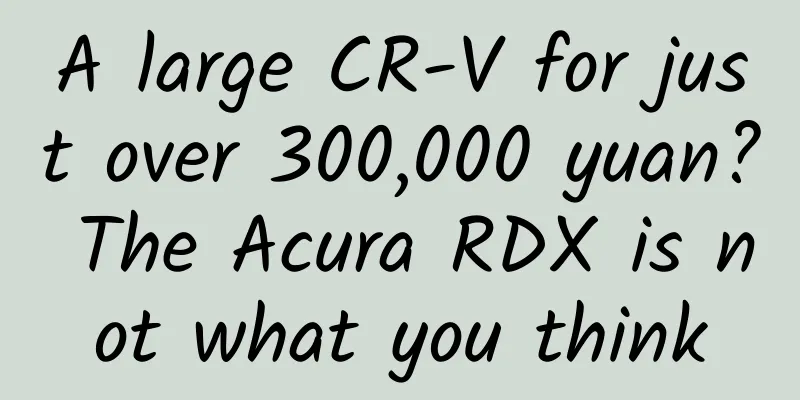How difficult is it to make a ballpoint pen? Your childhood schoolbag actually contained high-tech

|
Produced by: Science Popularization China Produced by: Vivian (Beijing University of Aeronautics and Astronautics) Producer: Computer Network Information Center, Chinese Academy of Sciences One of the reasons why I looked forward to the start of school when I was a kid was that I could buy new stationery. Many people don’t know that the technology used in these seemingly ordinary stationery is not ordinary. Image source: veer gallery Is it difficult to make a ballpoint pen? The reason why ballpoint pens can dispense ink smoothly is that during the writing process, the small ball at the tip of the ballpoint pen rolls under the friction generated when it comes into contact with the paper, thereby bringing out the ink in the pen core to form handwriting. Simply put, the structure of a ballpoint pen tip is to embed a ball in the top of the ball seat so that the ball can rotate smoothly and is not easy to fall off the ball seat. However, such a simple design places great demands on the balls. Ballpoint pen tip (Photo source: Veer Gallery) There are three main technical difficulties in manufacturing ballpoint pen tips. First, in order to ensure a smooth writing experience, the fit between the ball and the ball seat is crucial. The gap between the ball and the ball seat is about 5 microns. If the gap is too small, the ink will not flow out smoothly; if the gap is too large, it will cause ink leakage and even cause the ball to fall off the pen tip. Secondly, during the writing process, due to the constant friction between the ball of the pen tip and the paper, the gap between the ball and the ball seat will gradually increase. Over time, ink will easily leak out of the gap, affecting writing. In addition, the ballpoint pen tip has extremely high processing and assembly accuracy. There are uneven steps and oil guide grooves inside the pen tip to guide the ink, and the processing accuracy of each oil guide groove is required to be 1 micron. All of the above factors place higher demands on the material performance of ballpoint pen balls. Internal structure of a ballpoint pen tip (Image source: Reference 1) Searching for special steel - "pen tip steel" The materials used to make ballpoint pens have been continuously evolving. Early lead brass and nickel-nickel copper have been basically phased out due to their poor corrosion resistance. Now, different specifications of materials are available, including stainless steel balls, tungsten carbide balls and ceramic balls. Among them, stainless steel has become the most commonly used material for ballpoint pen tips. The steel used in ballpoint pens has a special name - nib steel. The nib steel needs to be rust-resistant to resist corrosion from solvents and other factors during long-term contact with ink. At the same time, in order to ensure the stability of the gap between the ball and the ball seat, the nib steel also needs to have wear-resistant properties. During the machining process, a carbide drill is used at a high speed of 30,000 rpm, and the machining error cannot exceed 3 microns, which requires the pen tip steel to have good easy-to-cut performance. At the same time, the easy-to-cut performance is also reflected in the need for fine chips, such as chipping chips and C-shaped chips, so that the waste chips can be easily and quickly separated from the workpiece, reducing scratches on the surface, so as to ensure the integrity of the complex structure of the inner cavity of the pen tip. Easy-to-remove chippings and C-shaped chips (Image source: Reference 5) Pen tip steel is a kind of free-cutting stainless steel, which is a special steel made by adding a certain amount of free-cutting elements such as sulfur, lead, phosphorus, etc. to ferritic stainless steel. The mechanism of action of the free-cutting element can be summarized as the element and the inclusions it forms, which can both act as a lubricant between the tool and the steel and act as a stress concentration point to make the chips brittle. Different elements have slightly different modes of action. For example, lead is in the form of spherical particles. When friction and heat are generated during cutting, the lead element with a lower melting point melts and precipitates, acting as a lubricant on the contact surface. Sulfur can form manganese sulfide inclusions with manganese in steel, thereby blocking the continuity of the steel, making the chips short and easy to remove. In addition, manganese sulfide will extend along the shear plane under the action of cutting force, ultimately reducing friction resistance. During the cutting process, the free-cutting elements and the inclusions they form can act as a lubricant between the tool and the material. Conquer the "Made in China" nib steel! The steel of a ballpoint pen is composed of more than ten elements, including carbon, silicon, manganese, phosphorus, copper, nickel, etc., and the content of each element is also different. Which elements are selected, how much of each element is used, and when each element is added will affect the performance of the steel. For a long time, the chemical composition and technical parameters of nib steel have been controlled by companies in Japan, Switzerland and other countries. However, even without technical support and with great difficulty, we still managed to overcome this technology, developed domestic nib steel, and realized domestic mass production of nib steel in 2017. From then on, the nib steel used in our country can proudly bear the "Made in China" logo. Image source: veer gallery Compared with foreign nib steels, our nib steels have similar elemental composition types but different contents, but their performance is still excellent. When we use a ballpoint pen, we may not realize that such a tiny pen tip requires scientific and technological research to develop materials. We not only need to understand the microstructure of metals and its mechanism in detail, but also need to continuously accumulate data, adjust parameters, and design process methods to produce the required special steel. We would never have thought that the tiny nib would have to undergo rigorous testing of more than 800 meters of continuous writing without losing ink before it could meet the standards and leave the factory. Sometimes we feel that scientific research is far away from us, but we don’t realize that it has already permeated every aspect of life, just waiting for us to decode it. References: (1) Guo Hengchang, Su Juan, Huang Gang. Research progress of free-cutting stainless steel pen tip materials[J]. China Pen Making, 2020(01), 11-18. (2) Su Juan, Du Huiling, Guo Hengchang. Lubricating film on the surface of stainless steel pen tip ball and its influence on writing performance [J]. Lubrication and Sealing, 2019, 44, 5, 83-89. (3) C. Furusho, H. Takabayashi. Ferrite type free cutting stainless steel for eg bearing of precision equipment, contains carbon, silicon, manganese, phosphorus, sulfur, copper, nickel, chromium, molybdenum, vanadium, tungsten, and titanium, in specified mass ratio. Derwent Primary Accession Number: 2017-78270T. (4) H. Wang, J. Li, J. Zhai, D. Che. Stainless steel for ballpoint pen tip, comprising chromium, nitrogen, lead, tellurium, vanadium, niobium, nickel, copper, oxygen, carbon, silicon, manganese, phosphorus, sulfur, balance iron and unavoidable impurities. Derwent Primary Accession Number: 2017-582091. (5) Xia Mingzhe. Study on the correlation between cutting performance and microstructure of special free-cutting stainless steel[D]. Zhejiang University of Technology, 2016. (6) Fu Wensheng, Shen Ping, Yang Qiankun, Zhang Dong, Yang Shufeng, Fu Jianxun. Exploration of key process parameters of free-cutting pen tip steel based on reverse engineering method[J]. 2019, 41, 91-97. (7) Q. Yang, P. Shen, D. Zhang, Y. Wu, J. Fu. Analysis on composition and inclusions of ballpoint pen tip steel. International Journal of Minerals, Metallurgy and Materials, 2018, 25, 420-428. |
<<: 【Theory】Liu Xiqing: The Relationship between Painting and Science
Recommend
Han Yibing: 2016 will see a huge explosion in Internet TV advertising, and brands should plan ahead
On October 19, 2015, the 2015 China Internet TV D...
How to improve the activity of private domain communities?
There are a lot of WeChat communities nowadays. I...
Poplar and willow catkins are coming! Take this guide to prevent catkins for people with allergies
Willow catkins are coming! Keep this guide on how...
CDC issues a reminder! The recent high incidence rate means you must do less of this!
April 27 Ningbo CDC issues reminder What is the j...
China Association of Automobile Manufacturers: Analysis of Chinese brand passenger car sales in January 2023
According to statistics and analysis by the China...
Three days after the release of Black Myth: Wukong, the first batch of "cyber lovelorn" patients appeared...
On August 20, China's first 3A game "Bla...
With 80 million users after one year of launch, what is Pinduoduo’s growth logic?
A few days ago, when I was traveling in Guangzhou...
Practical case analysis: A personal account can gain 1,000 followers per day with just one trick
"Before the arrival of 5G, what you want is ...
Behind Vivo’s amazingly thin new product: Is the phone even “thicker”?
The persistence of domestic mobile phones in stri...
Ditch the milk and drink "plant milk"? Don't do it yet!
|||| Compiled by New Media Editor Fang Yongzhen T...
Things about Android application hardening
Labs Guide As people become more and more depende...
Pro.cn Advertising Home Dai Tao: Products and technology are core competitiveness
"The precision of Internet marketing has evo...
Excellent source code sharing: Android developer benefits are here
[[209957]] Android Bluetooth chat source code Sou...
Volkswagen Group (China) debuts at the 6th CIIE: In China, for China, leading a new era of smart mobility
[Shanghai, November 5, 2023] Volkswagen Group (Ch...
360 search advertising promotion daily budget modification settings!
What is a daily budget? The daily budget is the m...









